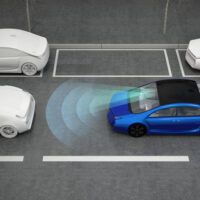Two Goals Of Automotive Safety Features

Automakers have made great strides in the area of safety technology over the years, and some recent innovations demonstrate that the industry is dedicated to reducing the devastating effects of car accidents. The National Highway Traffic Safety Administration (NHTSA) reports that driver assistance solutions have the potential to save thousands of lives every year, which would go a long way in California. Data from the California Highway Patrol (CHP) indicates that more than 3,900 people are killed and another 277,160 are injured in auto crashes every year. Advanced safety features are among the most effective ways to address the top cause of these collisions: Human error.
With the vast array of safety technology available on today’s vehicles, it can be overwhelming to understand how the solutions work. It is helpful to divide them into two categories: Those intended to prevent crashes, and features designed to minimize the devastating effects of car accidents in Oakland. The following information should serve as a basic guide.
Safety Features for Accident Avoidance
With human error being a top factor in auto collisions, some technology options address actions and interactions with the driver. Accident prevention solutions aim to eliminate these mistakes or errors in judgment, such as:
- Lane Departure Warning: By implementing a system of sensors and cameras, this technology can detect when a motorist is veering or swerving out of the lane. Lane departure warning issues an alarm, but does not correct steering.
- Forward Collision Warning: With this system, sensors can assess the speed of vehicles in front of you and compare them to your own. The technology will alert the operator to a potential impact, but does not take evasive action.
- Auto Emergency Braking (AEB): This technology DOES assume some control over the vehicle, which is why NHTSA refers to AEB as a collision “intervention” system. When the solution receives data from sensors and predicts a forward collision, it applies the brakes.
Technology for Mitigating the Effects of an Auto Crash
These safety features are equally important, especially considering the fact that many of the older vehicles sharing the road with you are not equipped with collision warning or intervention systems. One of the quintessential pieces of safety equipment in this category is one you reach for every time you get into a car: Your seatbelt. By buckling up, you decrease your risk of suffering a fatal injury in a car accident by half.
In addition, the following safety technologies can minimize the impacts of a collision upon the occupants:
- Airbags;
- Reinforced steel frames and chassis;
- Rollover prevention to prevent roof collapse; and
- Emergency communications systems, such as OnStar.
An Oakland Car Accident Lawyer Can Explain Your Legal Options
No safety technology can completely prevent car accidents and their devastating consequences, so it is reassuring to know that you can still seek damages if you were hurt in a crash. To learn more about your options, please contact the Oakland car accident lawyers at Venardi Zurada, LLP. We can schedule a free consultation at our offices.
Resource:
chp.ca.gov/programs-services/services-information/switrs-internet-statewide-integrated-traffic-records-system/switrs-2017-report

 The Official Injury Attorneys of the San Francisco 49ers
The Official Injury Attorneys of the San Francisco 49ers